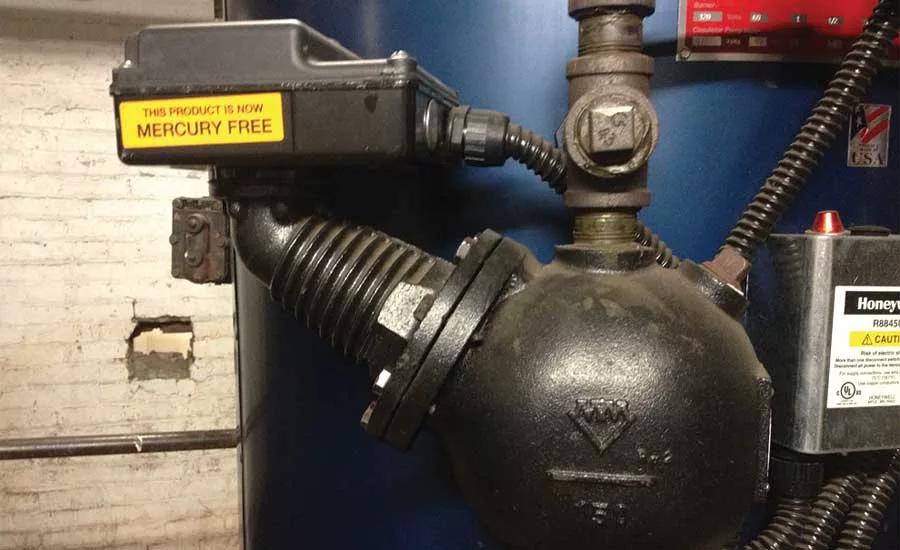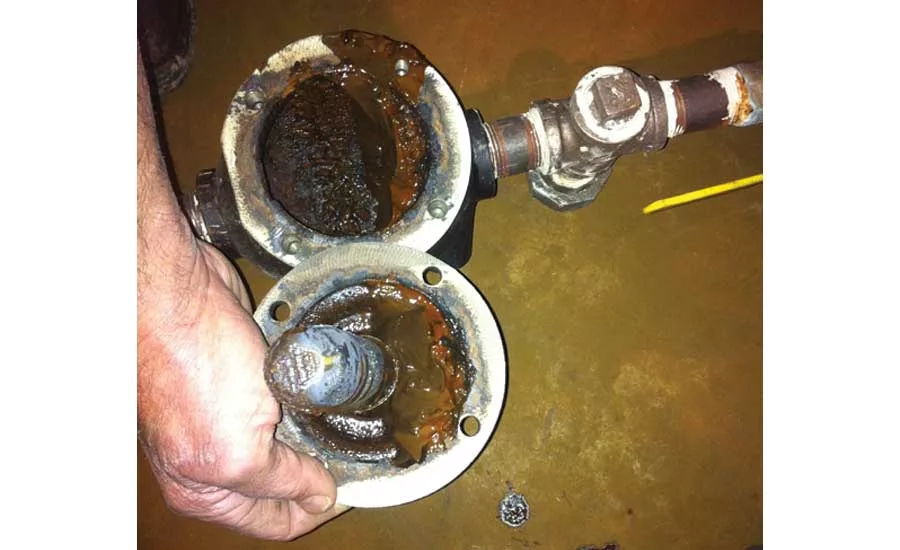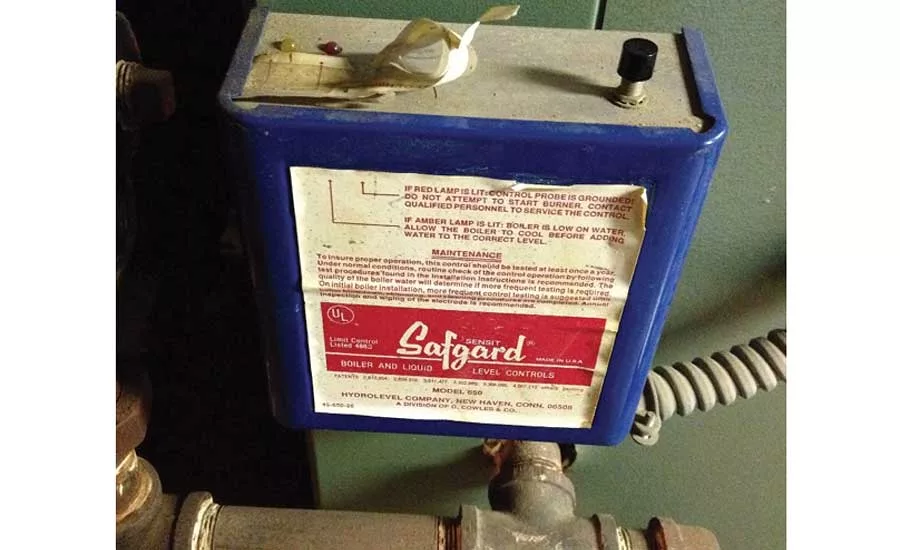How to maintain low-water cutoffs
The subsequent text showed a picture of a low water cutoff disassembled and filled with mud and rust.

This combination low-water cutoff and pump control will open the feed-water valve or start the boiler feed pump when the water level drops. If it drops further, it will interrupt power to the burner. Photo credit: Ray Wohlfarth

This disassembled low water cutoff is plugged with dirt and mud. It was only a year old. Photo credit: Ray Wohlfarth

This probe-type low-water cutoff has an internal probe sensor in the boiler. Photo credit: Ray Wohlfarth
“Help” was the one-word text I received one Saturday evening from my friend. The subsequent text showed a picture of a low water cutoff disassembled and filled with mud and rust. I excused myself and called him.
He was frantic and told me the steam boiler he installed a year ago failed. The owner was furious and demanded my friend replace it under warranty. The mud inside the level control fooled the boiler into thinking it was full of water. Instead, the boiler was empty and kept firing. The sections of the cast iron boiler cracked and the boiler was a total failure. The installer called the wholesaler where he purchased the boiler on Monday, and they brought in the factory rep.
After finger pointing and chest pumping, it was determined the facility owner did no maintenance on the boiler and, as a result, the warranty was void. The customer argued the warranty said nothing about mandatory maintenance. As a result, the boiler manufacturer supplied a new boiler at a deeply discounted price and the installer cut his labor rates to install the replacement. It was an ugly scene, but legal proceedings were averted.
This situation could have been avoided if the owner had performed maintenance on the boiler and low-water cutoff. The boiler mentioned above had only one low-water cutoff because it was a small one. Most commercial steam boilers have redundant low-water cutoffs, which means there is a backup in case the primary safety control fails.
The low-water cutoff is the leading mechanical cause of boiler accidents and relatively simple to maintain. If you follow the manufacturer’s recommendations, the boiler should give several decades of trouble-free operation.
On residential boilers, many use a float-type low-water cutoff with a gauge glass attached. The control has an internal float assembly that monitors the water level inside the boiler. The manufacturer will usually ask for a weekly test of the control. The test involves opening the drain while the burner is operating and verifying the burner shuts off. The manufacturer will usually also recommend a yearly disassembly of the low-water cutoff. This will allow you to inspect the internal components as well as the sensing pipes connecting the control to the boiler. Verify the sensing pipes are open and not plugged. Be sure there are no valves in the sensing pipes for the control. The boiler should be locked off and allowed to cool before doing this or you will get a face full of hot water.
Some boilers use a probe-type low-water cutoff. This control is a little different, as the probe is inserted directly into the boiler. It uses the conductivity of the water to verify the proper elevation. This should be tested on a regular basis, as well. Most probe-type low water cutoffs require the probe to be removed, inspected, and cleaned yearly on commercial boilers and every few years on residential boilers. Again, be sure the boiler is cool and the water level is below the elevation of the probe level or you will get a shower. Some of the probe-type low-water cutoffs have a test button to check operation. This is a great idea as it allows testing of the control. This is required if your locale follows ASME CSD1 code.
Slow-drain test
Try to simulate the actual operating conditions when testing the low-water cutoff. I have found situations where the low-water cutoff control will shut off the burner when the drain on the control is opened quickly but may not do so under normal operating conditions.
For residential boilers, I close the makeup water to the boiler and gradually open the bottom drain of the boiler while the boiler is firing. I watch the boiler and verify it will shut off the burner when the boiler water level drops below the boiler normal water level. If the boiler water level drops below the bottom of the gauge glass and does not shut off the burner, it should not be operated until the low water cutoff is repaired or replaced. I usually attach a hose to the drain connection and run the water into a floor drain. Be sure to ask the customer if the floor drain works before doing this.
I have a couple warnings when draining the water from the bottom blowdown of the steam boiler. The water inside the boiler will be a black, murky mixture that will stain everything it touches, including your hands and clothes, the customer’s floor, and any laundry within a few feet. I use latex gloves for this task because the stain is almost impossible to remove from skin with soap. If you use a bucket, be sure it is not a customer’s bucket as the water will stain the bucket. I would not use a plastic bucket as the water will be hot and could melt the bucket and spill hot water on you or the floor.
If the boiler drain has not been opened in a while, it may be plugged. I once used a clothes hanger to open the drain pipe and was showered with the nasty water. Lastly, the valve may not seal when closed and could leak. I always keep some hose caps in my truck to install over the drain valve.
Commercial boilers with a boiler feed unit are a bit easier to test under actual operating conditions. I shut off the boiler feed pumps, simulate a call for heat, and watch the boiler operate. If the water level goes below the bottom of the gauge glass and does not shut off the burner, the cause should be investigated and the boiler not allowed to fire without fixing the problem.
Use extreme caution when working on the low-water cutoff, as you could be burned or injured.
Looking for a reprint of this article?
From high-res PDFs to custom plaques, order your copy today!




